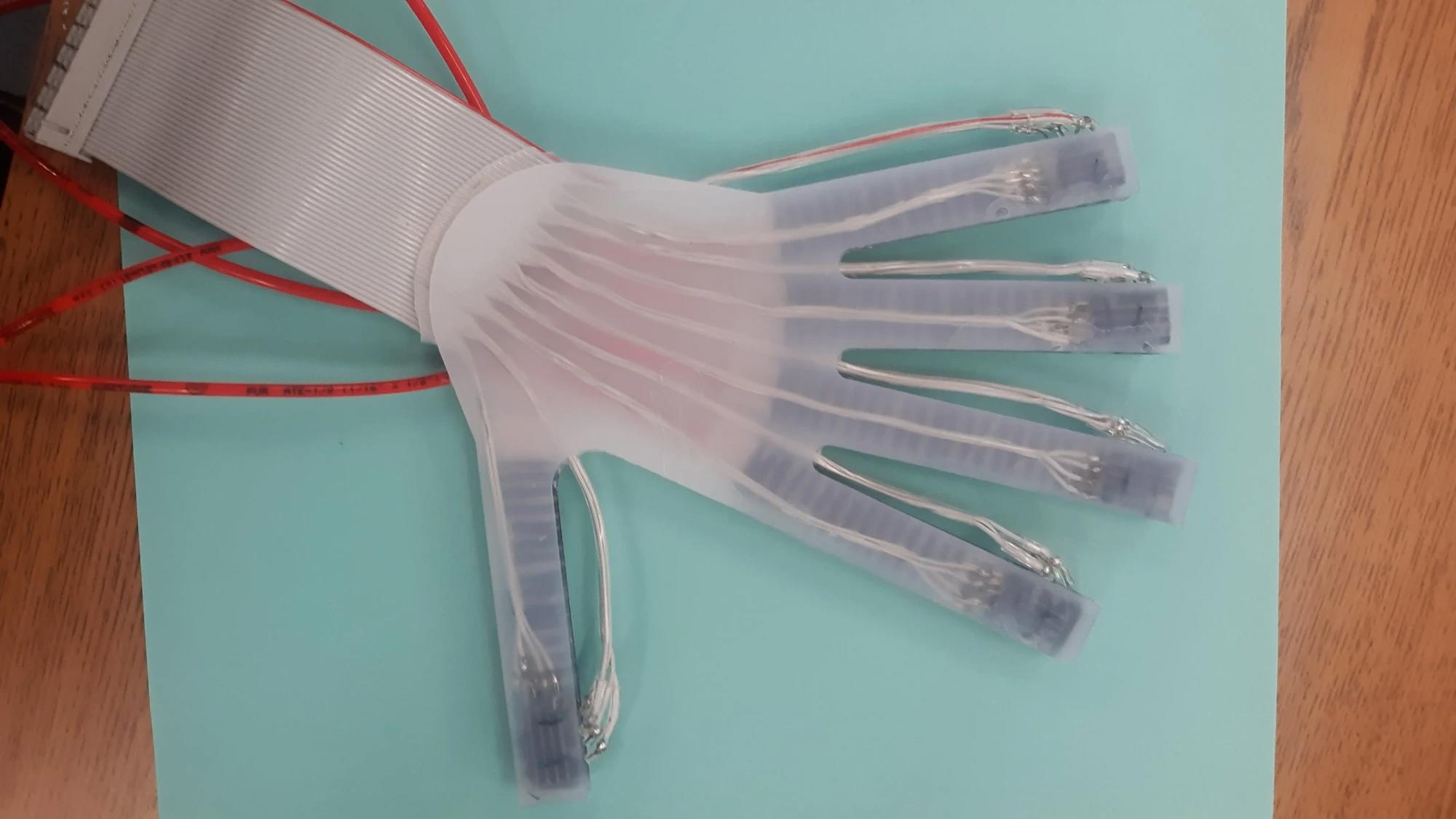
The soft smart hand exoskeleton. Image credit: Dr Maohua Lin et al.
The current study concentrated on patients who wanted to relearn to play the piano as a proof-of-principle, but the glove can seamlessly be adapted to aid in relearning other daily tasks.
Stroke is the most essential reason for the disability of adults in the EU, affecting around 1.1 million residents annually. Following a stroke, patients commonly require rehabilitation to relearn to talk, walk, or do daily activities. Studies have established that apart from physical and occupational treatment, music therapy can aid in the recovery of language and motor function in stroke patients.
However, for people well-versed in music and those who have gone through a stroke, playing music may itself be a skill that requires relearning. Now, a research study in Frontiers in Robotics and AI has displayed how new soft robotics can aid recovering patients in relearning music and other skills that need coordination and dexterity.
Here we show that our smart exoskeleton glove, with its integrated tactile sensors, soft actuators, and artificial intelligence, can effectively aid in the relearning of manual tasks after neurotrauma.
Dr. Maohua Lin, Study Lead Author and Adjunct Professor, Department of Ocean & Mechanical Engineering, Florida Atlantic University
Whom the Glove Fits: Custom-Made “Smart Hand”
Lin and colleagues developed and assessed a “smart hand exoskeleton” in the shape of a multi-layered, flexible 3D-printed robo-glove, weighing just 191 g. The complete wrist and palm area of the glove are designed in such a way to be flexible and soft, and the shape of the glove can be tailor-made to fit the anatomy of all wearers.
In its fingertips, soft pneumatic actuators produce motion and apply force, thus imitating natural, refined hand movements. Every fingertip also comprises a collection of 16 flexible sensors or “taxels,” giving tactile sensations to the wearer’s hand when having contact with surfaces or objects. The glove production is simple, as all sensors and actuators are put in place via a single molding process.
While wearing the glove, human users have control over the movement of each finger to a significant extent. The glove is designed to assist and enhance their natural hand movements, allowing them to control the flexion and extension of their fingers. The glove supplies hand guidance, providing support and amplifying dexterity.
Dr. Erik Engeberg, Study Senior Author and Professor, Department of Ocean & Mechanical Engineering, Florida Atlantic University
The authors foresee that patients might ultimately wear a pair of these gloves to help both hands independently to regain dexterity, motor skills, and a sense of coordination.
AI Trained the Glove to Be a Music Teacher
The authors employed machine learning to efficiently train the glove to “feel” the difference between playing correct versus incorrect versions of a beginner’s song on the piano. Here, the glove functioned independently with no human input, with pre-programmed mobilities. Four fingers were required to play the song “Mary had a little lamb.”
We found that the glove can learn to distinguish between correct and incorrect piano play. This means it could be a valuable tool for personalized rehabilitation of people who wish to relearn to play music.
Dr. Erik Engeberg, Study Senior Author and Professor, Department of Ocean & Mechanical Engineering, Florida Atlantic University
As the proof-of-principle has been established now, the glove can be engineered to offer feedback to the wearer about what went wrong or right in their play, either via visual cues, haptic feedback, or sound. These would facilitate him or her to comprehend their performance and make enhancements.
Picking up the Gauntlet for Remaining Challenges
“Adapting the present design to other rehabilitation tasks beyond playing music, for example object manipulation, would require customization to individual needs. This can be facilitated through 3D scanning technology or CT scans to ensure a personalized fit and functionality for each user,” Lin added.
He concluded, “But several challenges in this field need to be overcome. These include improving the accuracy and reliability of tactile sensing, enhancing the adaptability and dexterity of the exoskeleton design, and refining the machine learning algorithms to better interpret and respond to user input.”
Journal Reference
Lin, M., et al. (2023). Feeling the beat: a smart hand exoskeleton for learning to play musical instruments. Frontiers in Robotics and AI. https://doi.org/10.3389/frobt.2023.1212768.